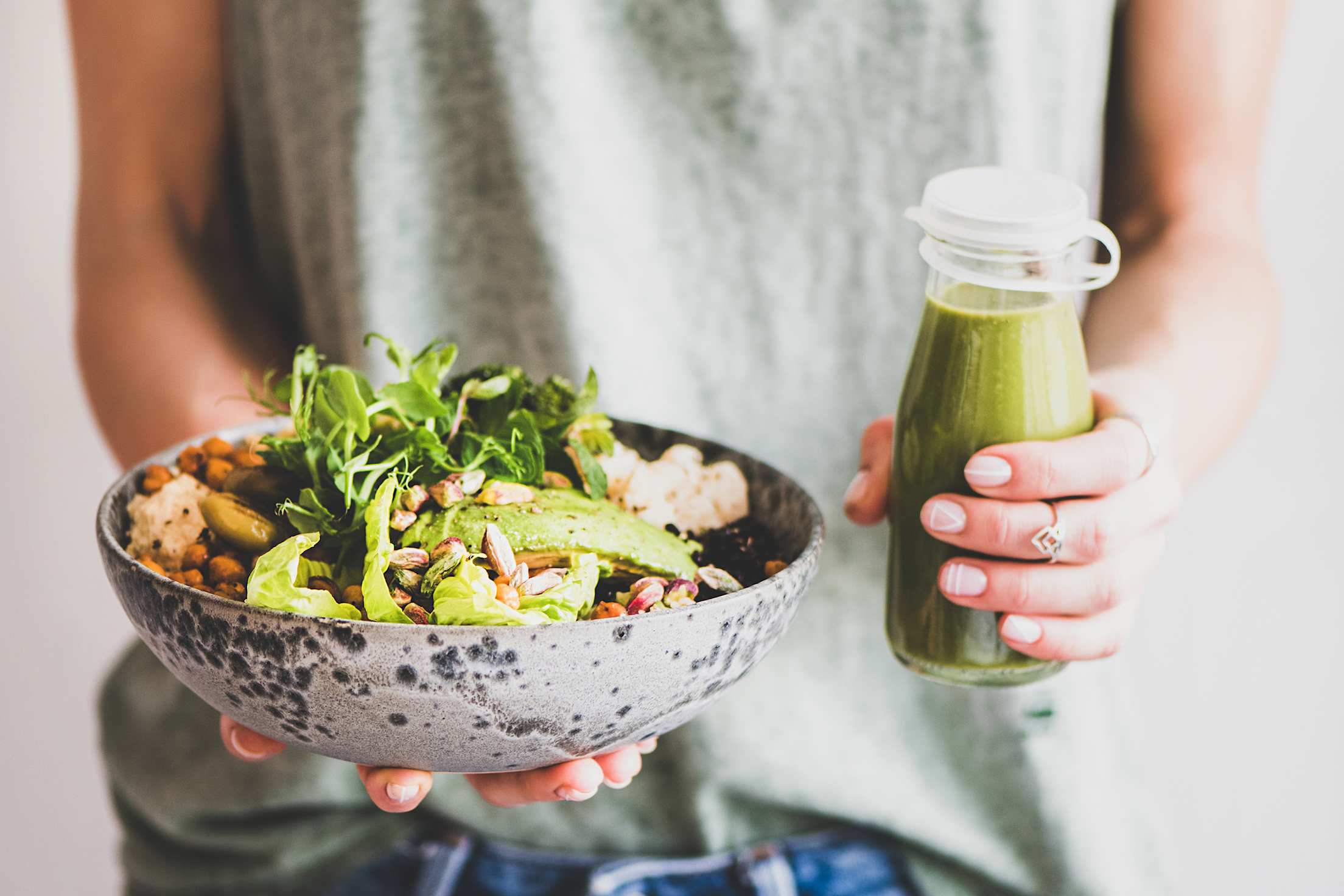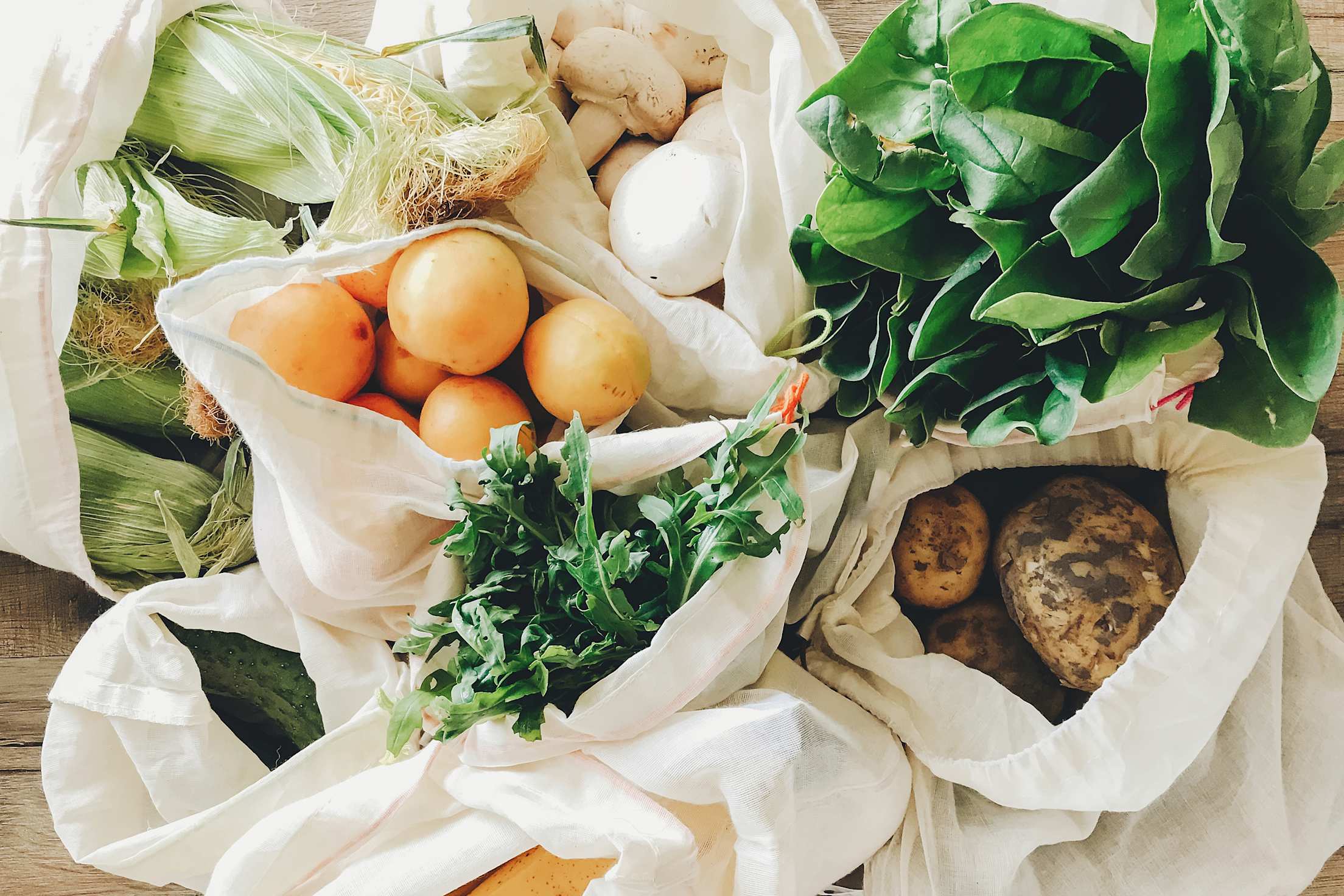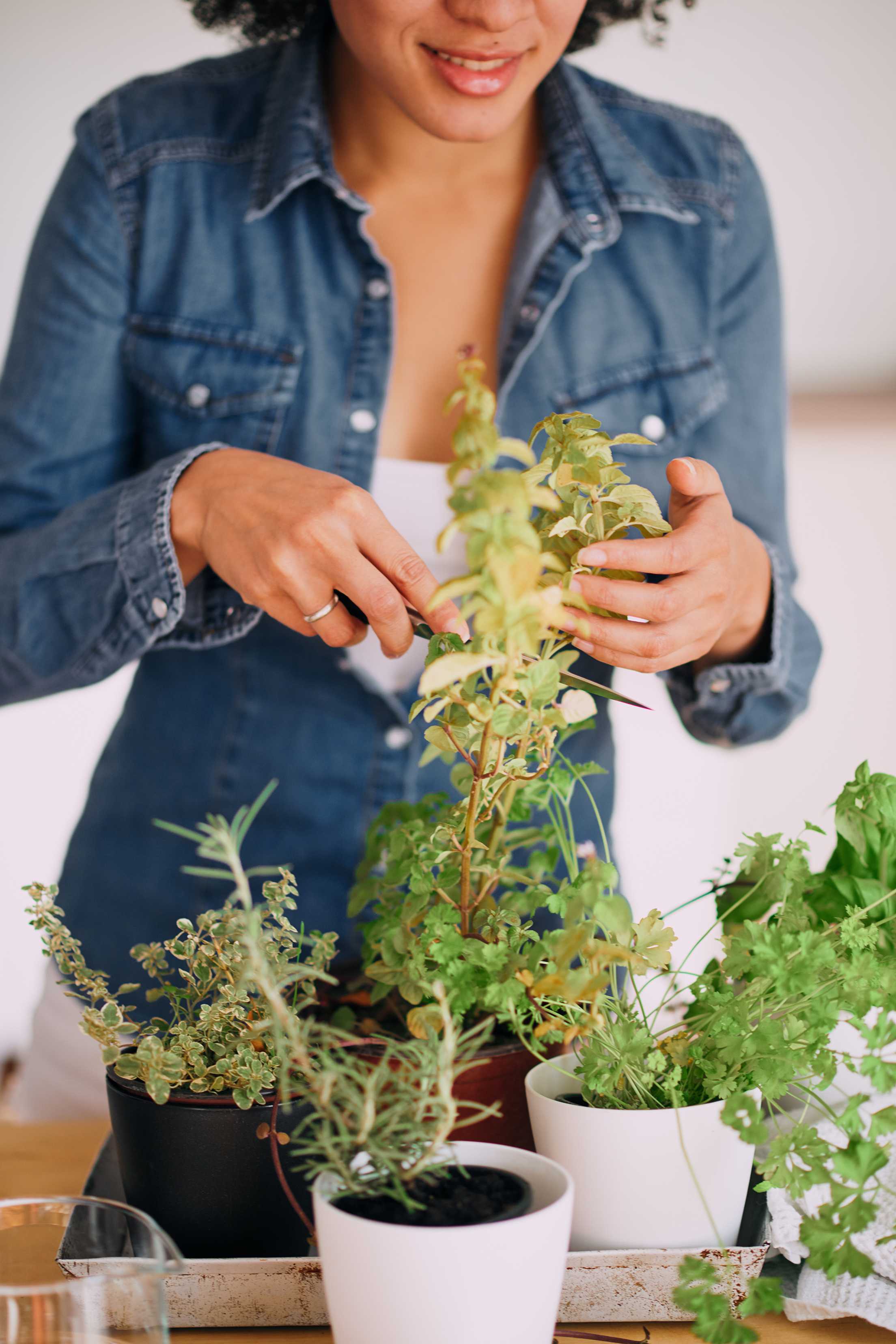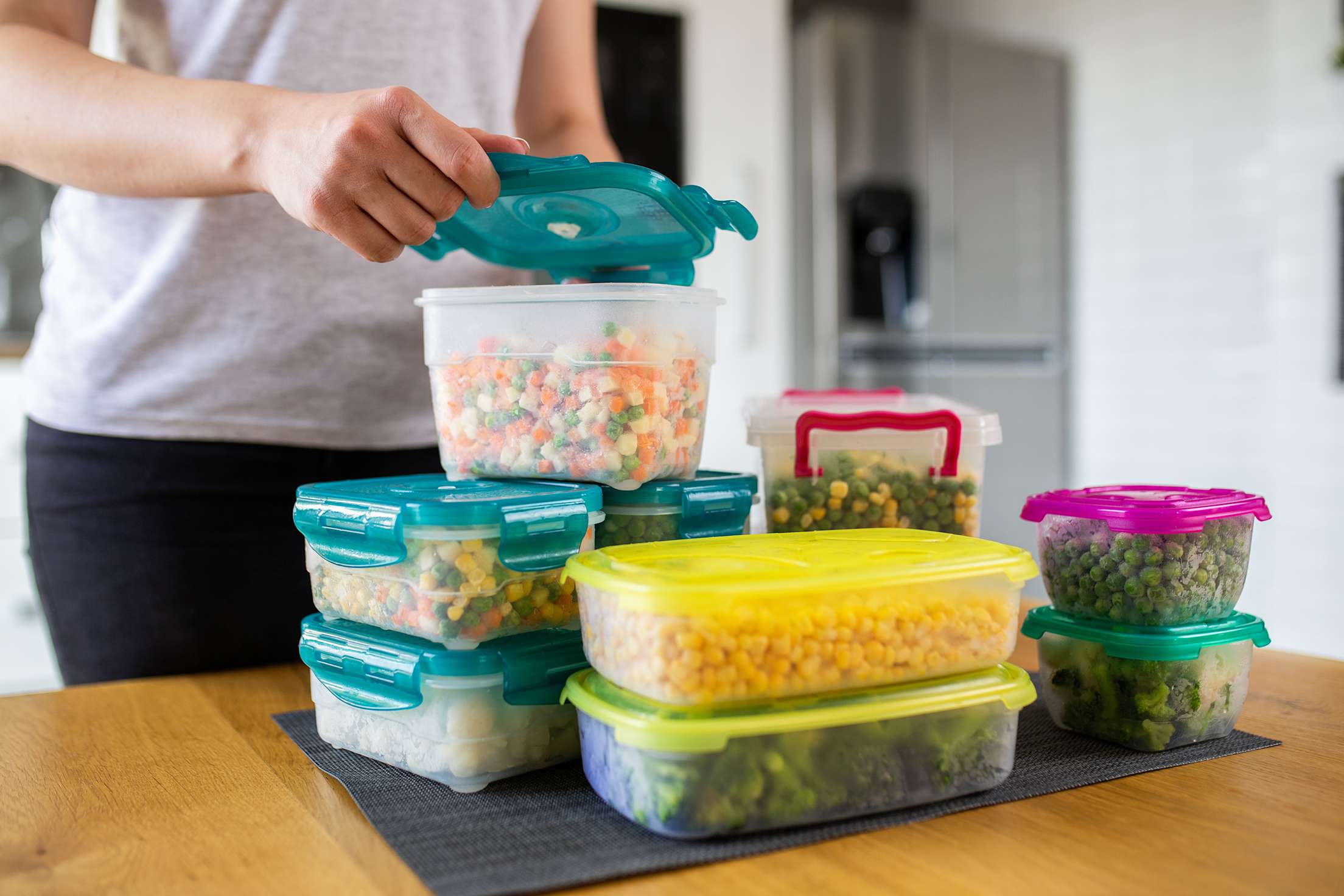
How to Stock a Healthy Pantry
Keep basic items on your shelves so you’re prepared for time-crunched weeknight dinners and emergencies.

A well-stocked pantry full of nutritious foods can make all the difference on busy weeknights and in trying times, such as during a pandemic or after a natural disaster. “Having nutritious options on hand is important for a number of reasons,” says Jacqueline Ratner, a senior project manager at Columbia University’s National Center for Disaster Preparedness. “Nutritious foods are more nutrient dense, which means that you can eat less of them while still getting the vitamins and minerals your body needs,” she says. A healthy diet can also support a strong immune system and help your body cope with added stress.
You could line your shelves with packs of instant ramen and boxed cereal, but why do that when it's possible to create a healthy pantry full of items that are both tasty and easy to prepare? Here’s how to build a basic pantry that will see you through a last-minute dinner and make sure your household is prepared for an emergency.
Keep enough food and water for at least 1 week on hand.
In the case of many natural disasters or a pandemic, you won't know how long you might need to self-sustain, “so it's a good idea to set yourself up to be healthy in case shortages and deficiencies present themselves later on,” Ratner says.
A week's worth of shelf-stable items that you can evacuate with and food that you can use at home is a good amount to keep on-hand at all times. When you're planning what to buy, keep in mind how many people you’ll need to feed and make sure you have a balanced variety of items that will sustain everyone.
Your emergency stores should also include at least a three-day supply of water (one gallon of water per person or pet per day), or up to two-weeks, if you have space. Set a reminder in your calendar to use and replace the water every six months to ensure it’s safe to drink when you need it.

Basic ingredients like rice and beans can be transformed into a wide variety of dishes.
Build a strong base.
According to Matthew Accarrino, executive chef at San Francisco's SPQR, you should always stock your pantry with a good supply of base foods, such as whole grains and beans. A robust store of basic items can allow you to create a wide variety of dishes. “A big bag of rice can go a very long way for next to nothing, and it makes a great canvas for all types of additions,” he says.
When stocking up, opt for minimally processed items (think dried beans instead of canned chili, whole chicken breast instead of chicken nuggets, etc.) when you can. Foods that are heavily processed can be high in sodium, sugar, and trans fat and low in beneficial fiber, vitamins, and minerals. The list below is a good place to start.
Panty Basics
- Whole grains: rice, quinoa, oats, etc.
- Starches: dried pasta, crackers, etc.
- Dried or canned beans
- Nuts and nut butters
- Dried fruit
- Broth and canned soups
- Canned items: fish (tuna, sardines, mackerel, and smoked mussels), diced tomatoes, etc.
- Flour and other baking ingredients
- Oil: extra virgin olive oil and avocado oil
- Vinegar: balsamic, apple cider, and rice vinegar
- Condiments: soy sauce, ketchup, mustard, etc.
- Spices and seasonings
Bulk up on protein sources.
Accarrino also recommends buying proteins in bulk. “You generally get a better deal buying larger quantities,” Accarrino says, and when it comes to fresh meat and fish “you can freeze individual-sized portions in freezer bags wrapped in freezer paper, and defrost only what you need.”
Shelf-life of Frozen Proteins
- Poultry: 1 year for a whole chicken, 6 to 9 months for parts
- Ground meat: 4 months
- Pork chops: 4 to 6 months
- Lean fish: 6 months
- Fatty fish like salmon: 3 months
- Commercially frozen shellfish: up to 12 months
- Cooked beans: 6 months
- Tofu: 4 to 6 months
- Veggie burgers: 6 months
Another tip: Go straight to the source whenever possible, such as purchasing directly from a CSA, butcher, or fishmonger. “In many cases, they can prepare (e.g. descale and gut) and portion it for you onsite,” Accarrino says.

Consider buying fruits and vegetables to use quickly in addition to those that last longer, like onions and potatoes.
Don’t forget the fruits and vegetables.
“Fresh carrots and apples both have great shelf lives,” says Leah Groppo, a clinical dietitian with Stanford Health Care. “Also consider purchasing fresh vegetables that can regrow, like celery and green onions. If you get them with roots, you can then plant or store the roots in water to regrow them.”
When you buy vegetables, keep in mind how long they typically last in your home, and use the things that will wilt or otherwise degrade first. Hardier items such as potatoes, squash, and root vegetables can help round out meals once the more perishable items have been eaten. “Soup is a great catch-all for any leftover perishable odds and ends,” says Accarrino.
Frozen vegetables such as peas and artichoke hearts, which are both convenient to use and flash-frozen to lock in nutrients, can be used once the fresh produce is gone. Although Accarrino recommends buying vegetables fresh when they are in season and readily available, frozen veggies such as corn, spinach, and broccoli can save time and ensure you get your recommended servings even when you can’t go out to buy fresh.

You don't need much space to grow herbs at home.
Spice things up.
When it comes to adding flavor and providing seasoning, spices and herbs are ideal. “Spices can help you reinvent a food,” Groppo says. “For example, if you have chicken that is already prepared, you can add taco seasoning or lemon, pepper, and Parmesan to give you two different flavors but with the same basic ingredient.”
A small herb garden or planter box can also help add flavor and freshness at a low price. Basil, parsley, and chives are all easy to grow at home.
Make it last.
Canned items aren’t the only things that will safely keep. Jarred sauces, dried fruits, hard cheeses, and fermented foods such as pickles and miso can last for months when properly stored. Get creative and don’t forget about your favorite flavor-enhancing ingredients. You can even make them yourself—Accarrino recommends learning how to pickle, can, and preserve so you can buy seasonal items at their peak when they’re cheaper and enjoy them later.
In general, keep an eye on expiration dates, but remember: they are not a hard and fast rule. Best if used by/before dates provide guidelines for when an item may be at its most flavorful, according to the manufacturer. Except for infant formula, those dates do not signify an item’s safety. How a product looks, tastes, and smells is often the best indication of freshness and whether it’s edible.
Use up the oldest items first and rotate emergency preparedness items accordingly. Store food and water in a dry space away from excessive heat and sunlight. “Think about organizing your fridge by expiration date,” Groppo says, “so that you can work everything into your meal plan before foods expire.”
Long-lasting energy bars, protein powders, and freeze-dried or dehydrated meals are good additions for long-lasting emergency rations. Look for products made with natural ingredients, and protein powders fortified with vitamins and minerals.

Fresh produce can be prepped and frozen to extend its life.
Add variety and diversity.
Remember to keep all of the major food groups in mind and add in variety when you can. “Each person needs a combination of protein, fat, and carbohydrates to survive,” NCDP’s Ratner says.
Having an assortment of frozen, canned, and fresh foods is just as important. “You might have a disaster where the power goes out so your freezer food goes bad,” she says. “Or where your water source is contaminated so you can’t rehydrate freeze-dried food. In the case of a wildfire or a similar situation in which you have to quickly evacuate, hundreds of pounds of cans will be extremely difficult to transport.” Consider stocking a mix of cans and dehydrated foods in your emergency kit so you can carry it if need be.
“Just remember, in a true crisis it may not be about entertainment or variety in your diet but about getting by,” says Accarrino.
Grow your pantry slowly.
Ratner believes checklists are a great way to assure that everyone in your house is covered, but she also recommends compiling your pantry a bit at a time so that it's neither too expensive nor overwhelming. “Add one or two items to your grocery list every time you go shopping,” she suggests.